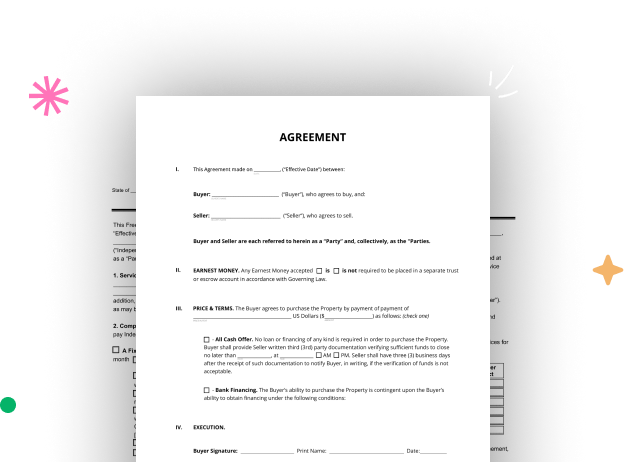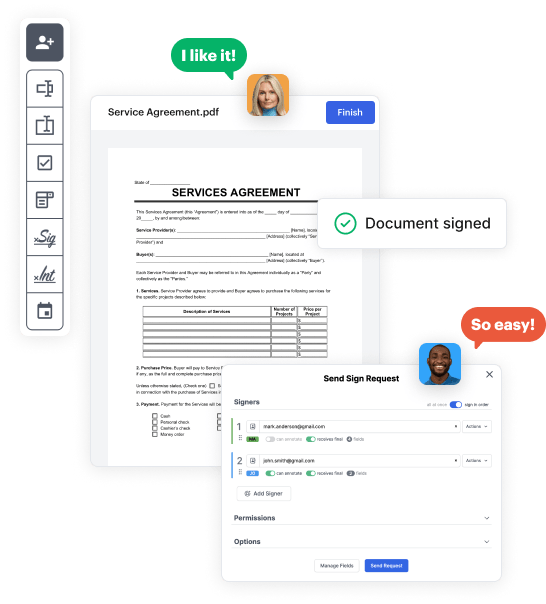

Navigate to the DocHub website and sign up for the free trial. This gives you access to every feature you’ll require to create your Individual to Trust Deed without any upfront cost.
Log in to your DocHub account and navigate to the dashboard.
Hit New Document in your dashboard, and select Create Blank Document to design your Individual to Trust Deed from scratch.
Add different elements such as text boxes, radio buttons, icons, signatures, etc. Organize these elements to match the layout of your form and designate them to recipients if needed.
Organize your form effortlessly by adding, moving, deleting, or combining pages with just a few clicks.
Convert your freshly crafted form into a template if you need to send multiple copies of the same document numerous times.
Send the form via email, distribute a public link, or even post it online if you wish to collect responses from a broader audience.